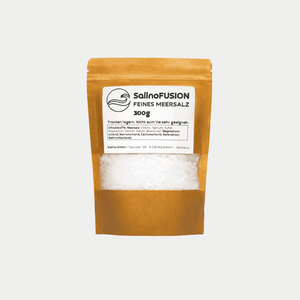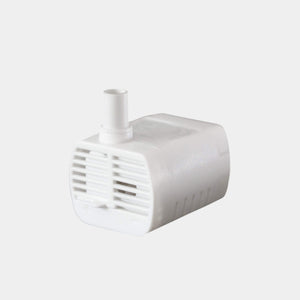Introduction: The art of not forgetting yourself
It usually starts gradually. One appointment follows the next, your head is full, your body is tired. And at some point, you feel like it's time to focus on yourself again. But what do you do when a spa weekend in the mountains seems out of reach and everyday life doesn't seem to let you down?
The good news: Well-being doesn't require a luxury trip. Sometimes a single day is enough. A day that belongs only to you. No cell phone. No "musts." Just you, your home, and what's good for you. A DIY wellness day is more than a collection of small rituals – it's an invitation to yourself to reconnect with yourself.
In this article, you'll find 8 ideas for creating exactly this kind of day for yourself – honest, profound, and without pressure. Whether you want to reduce stress, sleep better, or simply take a conscious break: Here you'll find inspiration for body, mind, and soul. Completely without clichés. Completely in tune with you.
1. The morning is yours: How to start the day with mindfulness
A successful wellness day doesn't begin with a frantic glance at your smartphone. It begins with silence. With your breath. With a moment that belongs only to you.
Maybe you open the window and let in some fresh air. Maybe you lie there for a few minutes and observe how the light in the room changes. The trick isn't in doing, but in letting go. There's no obligation, no goal—just a conscious arrival in your own body.
A lukewarm glass of water with lemon can gently help you get started. It stimulates digestion and symbolizes something much more important: you're taking care of yourself. Not later, not "when everything's done," but now.
If you like, you can complement this moment with a few gentle yoga exercises. No sweaty routine—just stretching, breathing, and presence. The sun salutation. A child's pose. Perhaps a conscious, deep inhalation through the nose, a long exhalation through the mouth. And with every breath, the feeling: Today, only the here and now counts.
2. Warming Rituals: What a Bath Does to Your Nervous System

Warmth is a form of affection. A warm bath isn't just a pleasure—it sends a message to your nervous system: You are safe. You can let go.
It's not about mountains of foam or Instagram aesthetics. It's about your feelings. About scents that calm you. Music that carries you. A soft light. Maybe you light a candle, add a few drops of lavender essential oil to the water, or place a damp towel over your eyes. Small things, big impact.
It has long been scientifically proven that warm water activates parasympathetic processes—the systems responsible for relaxation, regeneration, and sleep. Even half an hour of soaking can lower cortisol levels and relieve muscle tension.
The important thing is: no multitasking. No podcasts, no e-books. Just you, the water, the silence. And if you like, jot a few lines in a notebook afterward. How are you feeling? What are you letting go of?
3. Nutrition as a ritual: How to strengthen yourself with every bite

Eating is more than just nutrient intake—it's caring. A wellness day at home invites you to rethink this act of caring. Not in the form of strict rules or expensive superfoods, but through mindful preparation , slow chewing, and genuine enjoyment of flavor.
Maybe you start with a warming soup, homemade, made with seasonal vegetables. Or with a steaming herbal tea that you don't just drink, but smell, feel, and experience. It's not about making everything perfect. It's about listening to yourself: What's good for you today? What nourishes you?
Especially on stressful days, many people unconsciously reach for sugar or caffeine. On a wellness day, you can reverse this. Choose what strengthens you – not just in the short term, but sustainably. Perhaps a creamy porridge with apple and cinnamon, a plate of baked vegetables, millet, or lentils. Light, filling, and soothing.
The same applies here: Avoid multitasking. No scrolling, no "on the side." Sit down. Breathe. Eat slowly. And observe how your body reacts. Such a ritual has a deeper impact than any diet – because it connects you with yourself.
4. Space for silence: Why doing nothing can be so healing

In a world that glorifies constant activity, "doing nothing" almost seems like a taboo. Yet it's often the very moment when relaxation begins.
Silence doesn't have to mean that everything is quiet. It begins within. Maybe you lie down on the couch, close your eyes, and listen to your breathing. Maybe you just look out the window. The wind stirs the leaves, a dog barks somewhere, someone laughs. You are there. And that's enough.
Many people report that in such moments, new thoughts emerge—not in a hectic rush, but like quiet invitations. Some things resolve. Some things become clear. And many things are allowed to simply be, without being judged.
You don't need a meditation course to experience this. Just the permission to not have to achieve anything. If you like, you can deepen this stillness with a guided meditation – there are numerous apps and offerings, including free ones. What matters is not the method, but the attitude: You are worth becoming still.
5. Movement with feeling: Feel the body instead of optimizing it
Exercise is often confused with performance. But your wellness day isn't about burning calories or making progress. It's about feeling. About experiencing. About rediscovering yourself as a body – not as a to-do list on two legs.
A barefoot walk in the garden, a few intuitive movements to music in the living room, a walk in the park where you notice every plant as if for the first time – all of this is movement that does not demand, but gives.
So-called somatic exercises can be particularly helpful. These are short movement sequences from body therapy that are based on perception rather than stretching or strength. Slowly circling the shoulders. Consciously rolling along the spine. The focus is not on form, but on the question: How does this feel?
Such moments not only promote blood circulation but also activate the body's own calming system. You can use them as a transition—between bath and dinner, between reading and resting. Because every conscious movement is a sign: I am here. I am listening to myself.
6. Digital Detox: Why you should leave your phone behind today

The smartphone has its place – but not on your spa day. No other device takes up more space, no other screen demands our attention so mercilessly. That's why giving it up is a gift to yourself.
A day without scrolling, without messages, without push notifications feels strange—but also liberating. You'll notice how time stretches. How you slow down. And suddenly you're doing things you wouldn't normally do: reading a book, crafting something with your hands, thinking about a feeling for a long time.
If you don't want to give up your cell phone completely, at least turn off all notifications. Put it in a drawer. Use it consciously, if at all: for music, for a guided meditation, for a call to a loved one. But not as a stimulant. Not as an escape.
Because your DIY wellness day isn't a place for outside noise. It belongs to you. And that's precisely why you have the right to protect it.
7. A meaningful ending: The evening belongs to the essentials
The perfect end to a wellness day isn't fireworks, but a quiet landing. Perhaps you light a candle or write a few sentences in your journal: What were you grateful for today? What surprised you? What new things did you experience?
A quiet cup of tea, a hot water bottle, soft music. All of these can help integrate the day. And sometimes, too: a conscious ritual for better sleep. Perhaps a foot bath. Perhaps a scent on the pillow. Or simply the feeling that no goal had to be achieved today – because the most important thing has already happened: You were there. For yourself.
8. Breath is life: How conscious breathing exercises re-anchor you

Our breath accompanies us without us noticing – until we begin to perceive it. In moments of stress, it becomes shallow and hectic; in moments of calm, it becomes deep and supportive. This is precisely why simple breathing exercises can be so powerful: They bring us out of our heads and back into our bodies, from the outside world back to ourselves.
You don't need anything except yourself. Sit comfortably or lie on your back. Place one hand on your stomach and the other on your chest. And then: breathe. Feel your breath coming and going – without controlling it. Just observe.
If you like, you can deepen the exercise with a gentle technique: Inhale for four seconds, hold your breath for four seconds, exhale for four seconds, and hold for another four seconds. Repeat for a few minutes. This "box breathing" method is even used by therapists and athletes to promote inner calm.
It's not about breathing perfectly. It's about being present. And experiencing how much peace can lie in a single breath.
Conclusion: Your breath, your space, your day
A DIY wellness day at home is more than just a nice plan—it's a statement. A quiet decision to listen to yourself. In a world that's constantly noisy, that can be healing.
Whether through mindful eating, a warm bath, conscious movement, or digital silence: Each of these eight paths gives you something essential back. And when you engage with your breathing—deeply, calmly, consciously—something opens up within you that often remains closed in everyday life.
Relaxation is not a luxury. It's a necessity. And it starts with small things – a glass of water in the morning, sitting quietly, feeling warm air on your skin. Perhaps even a salty room, which acts like sea air and helps you sleep more soundly at night.
One way to experience salty air without any effort is with a mini-saline, such as SalinoVatis. It can act passively in the room and naturally enrich the air quality —a silent addition, especially for those with sensitive respiratory systems.
You don't have to travel far to arrive. Often, just one breath is enough.



